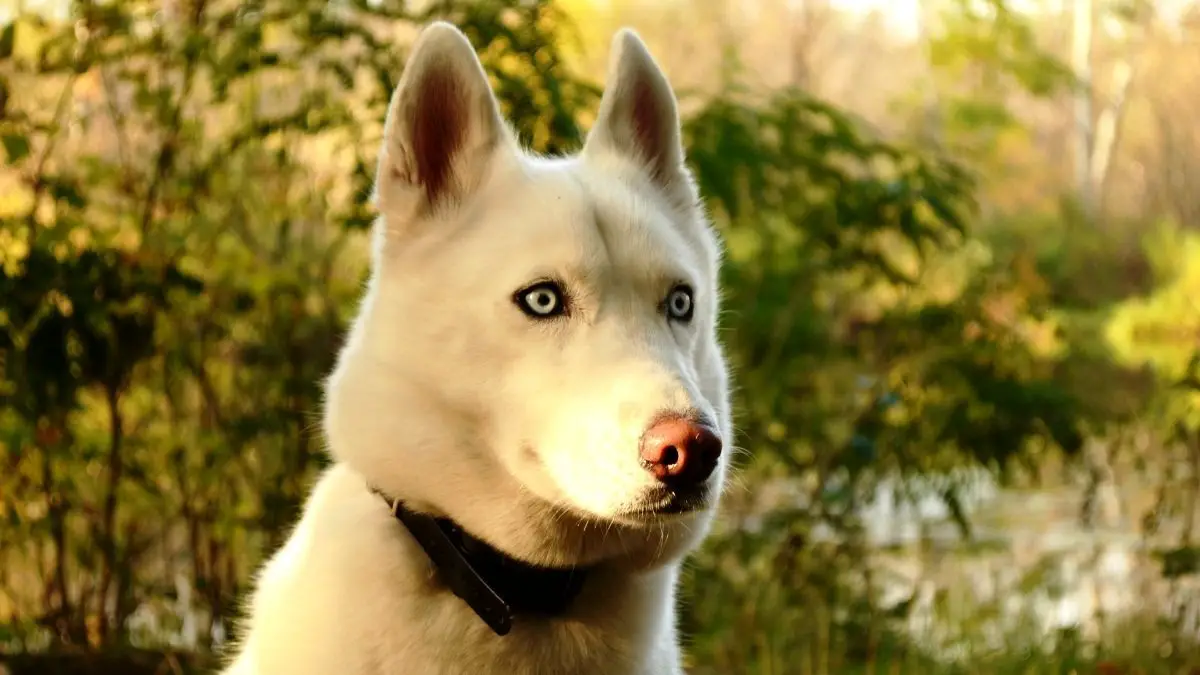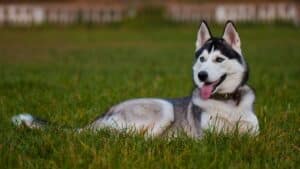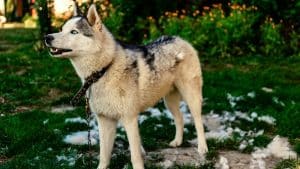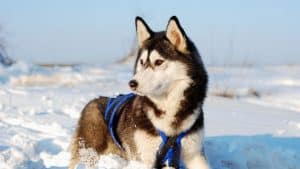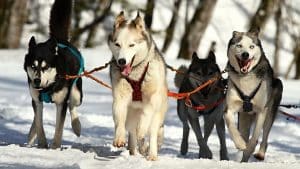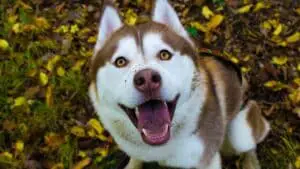Husky Markings And Colors: 6 Things You Should Know
Huskies are charming and loving dogs that enjoy bouncing around whenever possible. They have a reasonably predictable temperament, which is advantageous if you live with children. In short, they are great pets!
Yet, there is a typical belief that Huskies are born with either grey, black, or white coats. Many of the dogs do fall within this spectrum. However, Husky markings and colors are much more diverse, with significant differences between individual dogs.
This article will detail Husky markings and colors and other facts about their coats in general. If you own a Husky or are planning to adopt one, don’t be unaware of the significance behind their coat colors. Read this article through to the end to gain a general understanding.
Table of Contents
The Colors Of A Husky’s Coat
The color of your Siberian Husky’s coat can change as it ages, and it also depends on the season. Husky puppies tend to have darker-colored fur that gradually lightens as they keep growing older.
Furthermore, these dogs change their colors even when they are exposed to cold temperatures. When a Husky’s shedding season arrives, you may notice some color change at that time too.
Siberian Huskies can have a wide range of fur colors. But even though husky markings may change over time, their overall coat color remains consistent throughout their lifetime.
Let us take a look at some examples of what can typically be called Siberian Husky colors. They include:
- Black and white
- Agouti
- Grey
- Dark red
- Solid white
In addition to this, there is one other husky color-related fact that our readers should be aware of. The solid white Husky is the only one to have a coat consisting of a single uniform color.
All of the other fur colors have light silverfish or white undercoats. But these undercoats are too faint to be detected beneath the primary coat, so it seems like those are a single color.
Husky Markings
The markings on a husky puppy’s coat always make it appear more adorable and charming.
But as they grow older, these markings start changing. Moreover, this exact change pattern cannot be predicted because it varies according to each canine.
But generally, as their fur color changes, the puppies tend to develop darker markings. The grey color is genetic to huskies, and it also stands out a lot more on the darker-toned Huskies.
It may also happen that some puppies will not have any grey marking at all. But as your Husky grows more prominent, these markings will become visible gradually. Specifically, the markings can be seen around the eyes and muzzle most prominently.
So if you think that the gorgeous markings on your Husky pup will remain consistent through their lives, you are quite mistaken. Read below to find out!
Solid Coats Do Not Change Colors
No, the solid coat colors of Huskies do not change over time. Although they are pretty uncommon, some white-colored Huskies can be seen at times. As Siberian Husky transitions from its puppy days to adulthood, its markings also tend to change. But this does not happen in the case of a solid white Husky.
Siberian Huskies that are entirely white may not develop any facial marks at all. However, you may notice a difference in color tones with these pure white pups. Their coats may transform into a yellowish or a subtle, light golden color during the cold winter months.
This is why there is a prevalent notion that these pure-white Siberian Huskies are probably albinos. This means that they never change color for once in their life. But it is a common misconception, as the solid color is quite natural when it comes to Huskies.
Furthermore, as your Husky reaches its middle age, some grey hairs may appear around the eyes, temple, and muzzle. A strong elderly Husky may appear to develop something that resembles a mask. But in reality, grey hair is a sign of aging.
The Mask Color Is Different From Body Fur Color
Huskies can boast of a wide range of facial markings, which are also known as masks. But the color of the masks may differ from the color of their coats.
If you are a Husky parent, you may notice a color difference between the body and the mask. But if this happens, you can rest easy knowing that the color variation is inherited.
The color of the canine’s mask is usually lighter than the rest of the coat. . If you are looking for dark markings, they will probably be present in the solid white-colored huskies.
Since the solid white Huskies are pretty uncommon, dark markings will also be equally unique to spot!
But if your Husky has a dark-colored mask, it is only so in comparison to the rest of the dog’s body. For instance, if a young Husky has distinctive light brows, those may fade as the pup grows older.
But there is no need to worry. Your pet Husky will continue to be equally handsome despite it, if not more!
Frequency Of Coat Color Changes
Color changes occur once or maybe twice a year when it comes to mature Siberian Huskies. The Siberian Husky’s shedding habits affect the color of their coat as well.
Siberian Huskies typically shed their coats twice a year. The shedding occurs mainly when there is a change in the weather and specifically when the warm season transitions to the cold. So when shedding happens during this time, your Husky’s coat may become thicker and darker.
On the other hand, during the summer shedding season, your Husky may develop a much lighter coat in comparison. As a result, you can regard this coat color change as a natural process.
Coat Patterns
There are broadly two types of coats that a Siberian Husky can be born with. A white marking running from the paws to the shoulders is what classifies this type of cat.
- Pinto Huskies – They have white coats with patchy splotches of darker colors, such as blacks or reds.
- Piebald Huskies – They have predominantly white coats. But at times, patchy splotches of red or black, making them quite eye-catching.
Color Change In Husky Puppies
When husky pups are born, their coats are usually fuzzy and soft. But these puppies also tend to have dark-toned fur for some reason. But as they grow older, these puppies shed their fuzz and develop a relatively thick and coarse coat.
This newly developed coat tends to be lighter in color than the coat they had as a puppy. In some cases, the Siberian Husky puppies can also have black markings. But soon after their first shedding season, these black markings may fade to light grey.
In terms of dark circles under your husky’s eyes, they either fade away entirely or gradually fade to a lighter color.
Reasons Behind Color Change
Aside from the shedding season, various other factors contribute to color change in Huskies.
Overexposure To Sunlight
For instance, Siberian Huskies tend to see a change in their coat colors if they spend considerable time outdoors.
This is because Huskies were sled dogs used to living in freezing temperatures. Since they are not supposed to be well-suited to the sun, it can cause the coat colors to change gradually.
Reverse Tanning
If you have a black and white Husky, you will notice a subtle brownish or golden tint. This kind of color change, on the other hand, has nothing to do with normal shedding.
Long-term exposure to the sun causes these color changes. After limiting sun exposure, the color of some Husky canines may return to the dark. However, there have also been cases where the color change caused by the sun became permanent.
Many pet parents have even claimed to spend a long day at the park, and the jet-black huskies develop a red tint. So it looks to us that Huskies appear to be prone to reverse tanning! So, if this kind of color change occurs, the puppy should be kept occupied with indoor activities for a short period.
Final Words
Now you are acquainted with Husky markings and colors. If you are aware of and used to the color-changing habits of your dog, it would prove to be quite beneficial too.
Also, whatever color your beloved Siberian Husky ends up choosing, there is no denying that the puppies are the cutest of the bunch!
One great way to track the color change of Husky puppies is by taking a lot of pictures. In this way, you can gauge the gradual transformation of your pet from its days of being a puppy to adulthood.

